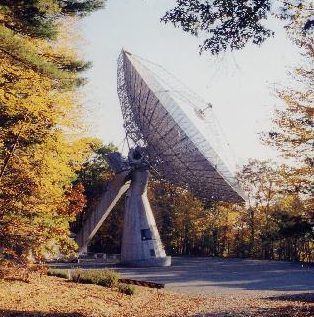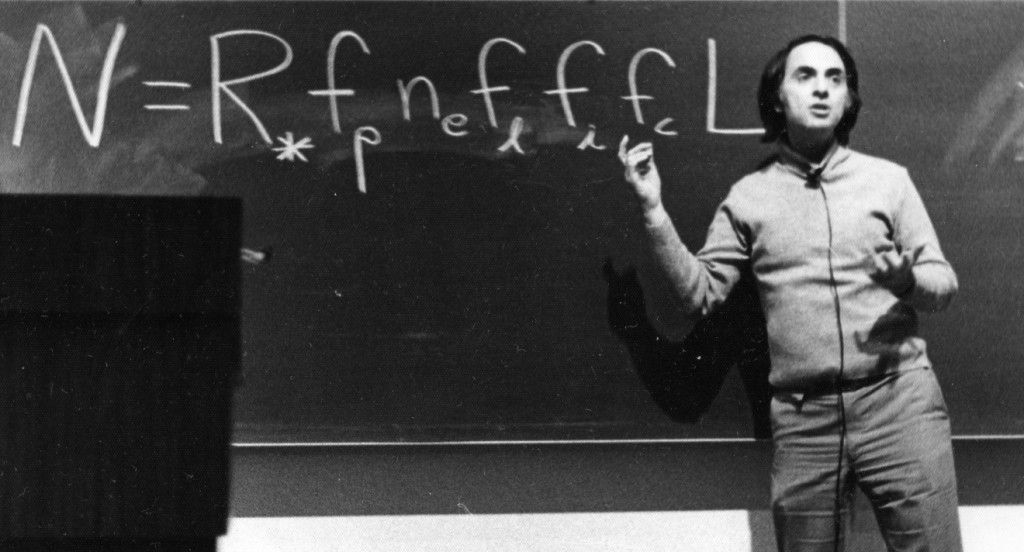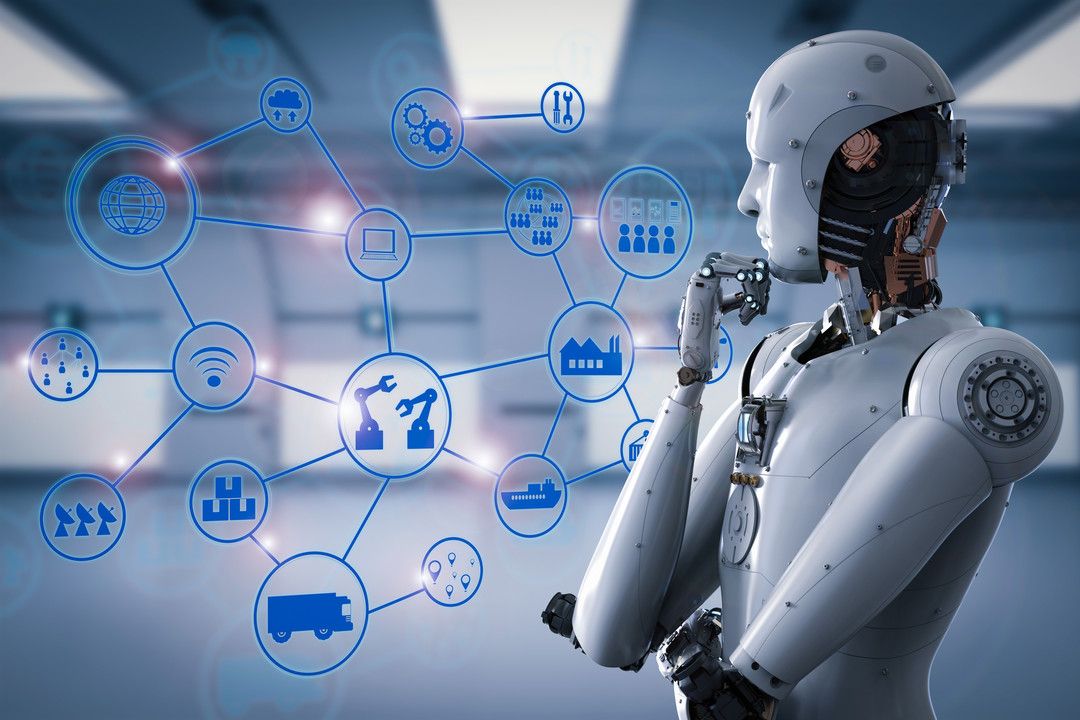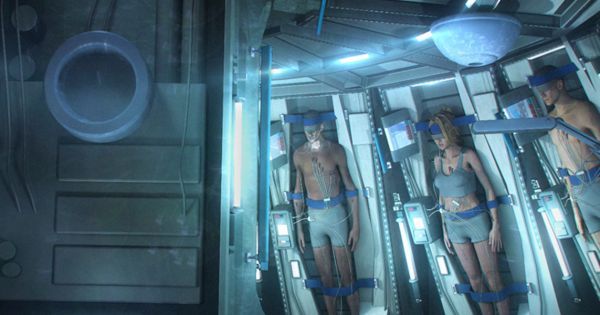Giant lasers may indeed launch fleets of spacecraft to Alpha Centauri, given breakthroughs in the science behind extraordinarily thin, incredibly reflective sails that can catch this laser light, a new study finds.


Giant lasers may indeed launch fleets of spacecraft to Alpha Centauri, given breakthroughs in the science behind extraordinarily thin, incredibly reflective sails that can catch this laser light, a new study finds.

The Fermi Paradox poses an age-old question: With light and radio waves skipping across the galaxy, why has there never been any convincing evidence of other life in the universe—or at least another sufficiently advanced civilization that uses radio? After all, evidence of intelligent life requires only that some species modulates a beacon (intentionally or unintentionally) in a fashion that is unlikely to be caused by natural phenomena.
The Fermi Paradox has always fascinated me, perhaps because SETI spokesperson, Carl Sagan was my astronomy professor at Cornell and—coincidentally—Sagan and Stephen Spielberg dedicated a SETI radio telescope at Oak Ridge Observatory around the time that I moved from Ithaca to New England. It’s a 5 minute drive from my new home. In effect, two public personalities followed me to Massachusetts.
What is SETI?
In November of 1984, SETI was chartered as a non-profit corporation with a single goal. In seeking to answer to the question “Are we alone?” it fuels the Drake equation by persuading radio telescopes to devote time to the search for extraterrestrial life and establishing an organized and systematic approach to partitioning, prioritizing, gathering and mining signal data.

Many of us associate astronomer Carl Sagan and Hollywood director, Stephen Spielberg, with SETI. They greased the path with high-profile PR that attracted interest, funding and radio-telescope partnerships. But, they were neither founders nor among the early staff. The founders, John Billingham and Barney Oliver assembled a powerhouse board of trustees, which included Frank Drake (Sagan’s boss at Cornell), Andrew Fraknol, Roger Heyns and William Welch. Among first hires were Jill Tarter, Charles Seeger, Ivan Linscott, Tom Pierson and Elyse Murray (now Elyse Pierson). Of course, Carl Sagan was advocated for the search for extraterrestrial intelligence, and he joined SETI as Trustee near the end of his life.
In The Birth of SETI, Tom Pierson reminisces about the early days of SETI. Also check out SETI pioneer, Jill Tarter, explaining how to write a message that will be understood by an alien civilization.
There is a lot of lore and love surrounding SETI, because its goal pulls directly on our need to understand our place in the cosmos. This week, SETI is going through a bit of transformation as it prepares for the next chapter in the search. So, where are the aliens? Are the funds and brainpower spent on peeping for aliens an investment in our own civilization, a form of entertainment, or a colossal waste?
This fascinating video offers 10 plausible solutions to Fermi Paradox. Fascinating, that is, if you can get past John Michael Godier’s dry, monotone narration. But. take my word for it. The concept and the content is exciting.
Police cars might soon be able to track your face.
Elon Musk’s vision of future public transport needs to become a reality now! 🚊.

Click on photo to start video.
Inside Emirates’ new first class suites with virtual windows and NASA-inspired seats.
This incredible 3D printer can create living human tissue.
Here is how we could reverse aging.

So much talk about AI and robots taking our jobs. Well, guess what, it’s already happening and the rate of change will only increase. I estimate that about 5% of jobs have been automated — both blue collar manufacturing jobs, as well as, this time, low-level white collar jobs — think back office, paralegals, etc. There’s a thing called RPA, or Robot Process Automation, which is hollowing out back office jobs at an alarming rate, using rules based algorithms and expert systems. This will rapidly change with the introduction of deep learning algorithms into these “robot automation” systems, making them intelligent, capable of making intuitive decisions and therefore replacing more highly skilled and creative jobs. So if we’re on an exponential curve, and we’ve managed to automate around 5% of jobs in the past six years, say, and the doubling is every two years, that means by 2030, almost all jobs will be automated. Remember, the exponential math means 1, 2, 4, 8, 16, 32, 64, 100%, with the doubling every two years.
We are definitely going to need a basic income to prevent people (doctors, lawyers, drivers, teachers, scientists, manufacturers, craftsmen) from going homeless once their jobs are automated away. This will need to be worked out at the government level — the sooner the better, because exponentials have a habit of creeping up on people and then surprising society with the intensity and rapidity of the disruptive change they bring. I’m confident that humanity can and will rise to the challenges ahead, and it is well to remember that economics is driven by technology, not the other way around. Education, as usual, is definitely the key to meeting these challenges head on and in a fully informed way. My only concern is when governments will actually start taking this situation seriously enough to start taking bold action. There certainly is no time like the present.
It wouldn’t be #MayTheFourth without some awesome Star Wars news.

Manned, long-term, deep space missions are an exciting prospect, but one that remains in the realm of distant possibilities–particularly because we don’t have all the technological innovations needed to make it happen.
One major consideration is the time it takes to reach the destination. Mars, which is at the top of various space programs’ go-to destinations for manned missions, is about six months if travel time away from Earth. If we wanted to explore even further, keep in mind that New Horizons, the fastest spacecraft to leave Earth, took nine and a half years to reach Pluto.
Science fiction conveniently sidesteps this challenge by putting the space explorers into deep sleep–a state of suspended animation. But slowing the human metabolism down while ensuring that a person will stay alive for extended periods is a lot easier said than done.